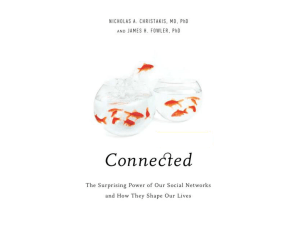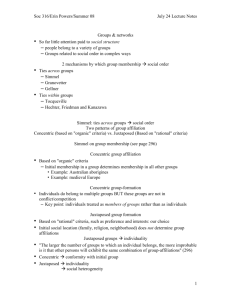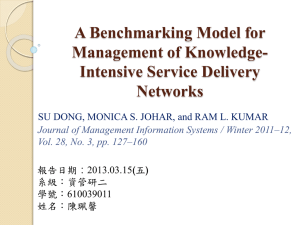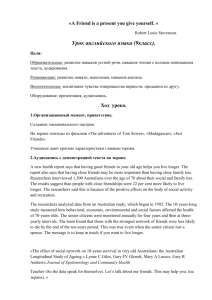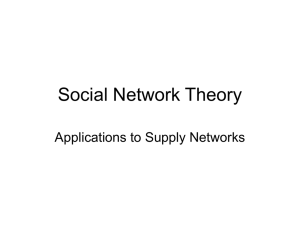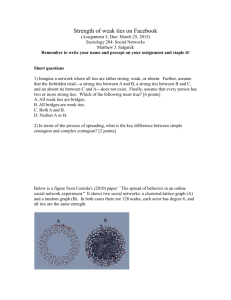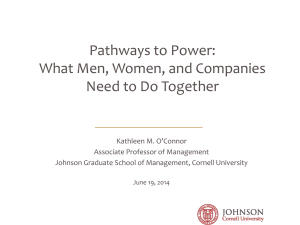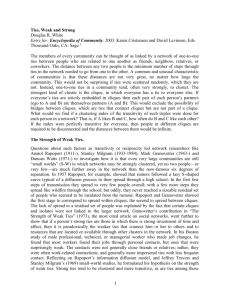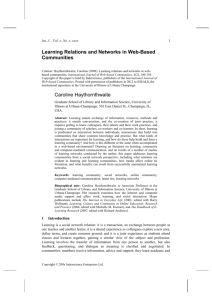Algarve_Journal
advertisement
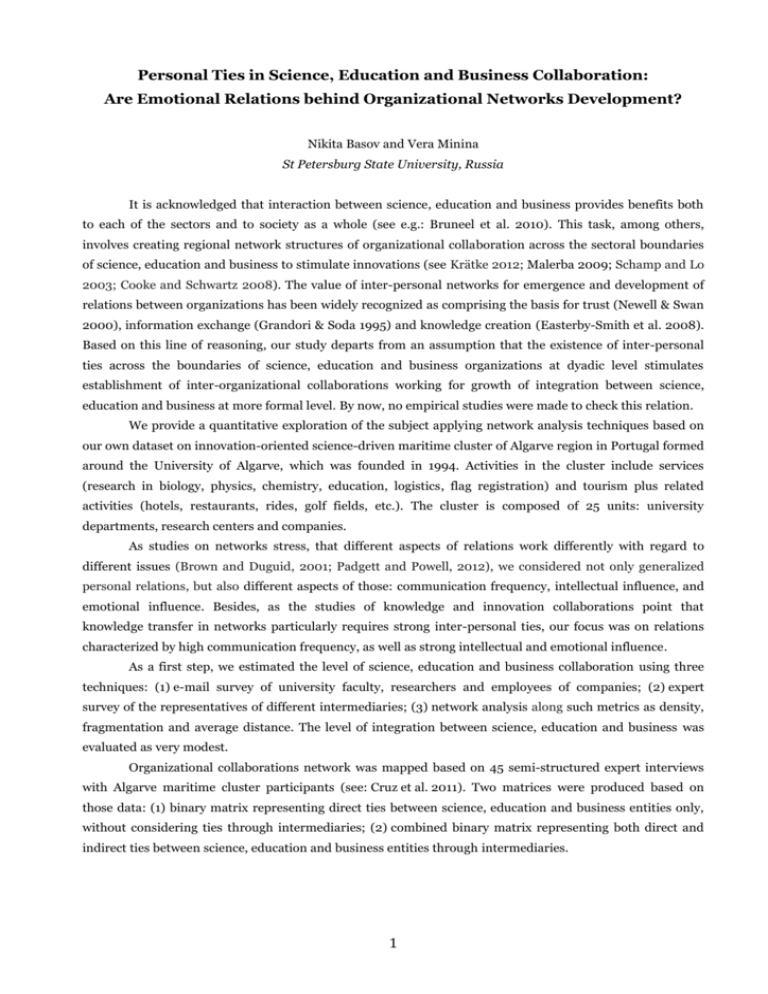
Personal Ties in Science, Education and Business Collaboration: Are Emotional Relations behind Organizational Networks Development? Nikita Basov and Vera Minina St Petersburg State University, Russia It is acknowledged that interaction between science, education and business provides benefits both to each of the sectors and to society as a whole (see e.g.: Bruneel et al. 2010). This task, among others, involves creating regional network structures of organizational collaboration across the sectoral boundaries of science, education and business to stimulate innovations (see Krätke 2012; Malerba 2009; Schamp and Lo 2003; Cooke and Schwartz 2008). The value of inter-personal networks for emergence and development of relations between organizations has been widely recognized as comprising the basis for trust (Newell & Swan 2000), information exchange (Grandori & Soda 1995) and knowledge creation (Easterby-Smith et al. 2008). Based on this line of reasoning, our study departs from an assumption that the existence of inter-personal ties across the boundaries of science, education and business organizations at dyadic level stimulates establishment of inter-organizational collaborations working for growth of integration between science, education and business at more formal level. By now, no empirical studies were made to check this relation. We provide a quantitative exploration of the subject applying network analysis techniques based on our own dataset on innovation-oriented science-driven maritime cluster of Algarve region in Portugal formed around the University of Algarve, which was founded in 1994. Activities in the cluster include services (research in biology, physics, chemistry, education, logistics, flag registration) and tourism plus related activities (hotels, restaurants, rides, golf fields, etc.). The cluster is composed of 25 units: university departments, research centers and companies. As studies on networks stress, that different aspects of relations work differently with regard to different issues (Brown and Duguid, 2001; Padgett and Powell, 2012), we considered not only generalized personal relations, but also different aspects of those: communication frequency, intellectual influence, and emotional influence. Besides, as the studies of knowledge and innovation collaborations point that knowledge transfer in networks particularly requires strong inter-personal ties, our focus was on relations characterized by high communication frequency, as well as strong intellectual and emotional influence. As a first step, we estimated the level of science, education and business collaboration using three techniques: (1) e-mail survey of university faculty, researchers and employees of companies; (2) expert survey of the representatives of different intermediaries; (3) network analysis along such metrics as density, fragmentation and average distance. The level of integration between science, education and business was evaluated as very modest. Organizational collaborations network was mapped based on 45 semi-structured expert interviews with Algarve maritime cluster participants (see: Cruz et al. 2011). Two matrices were produced based on those data: (1) binary matrix representing direct ties between science, education and business entities only, without considering ties through intermediaries; (2) combined binary matrix representing both direct and indirect ties between science, education and business entities through intermediaries. 1 To map inter-personal network we ran an e-mail survey of university faculty, researchers and employees of companies belonging to the cluster asking about different aspects of their most important personal relations across sectoral boundaries. Based on the answers, binary matrices were produced capturing the three aspects of strong personal ties across the boundaries of science, education and business. A matrix aggregating all the three aspects was also produced. To check for correlation and asymmetric relations between organizational level network and interpersonal network structures in the Algarve maritime cluster we applied the Quadratic Assignment Procedure (QAP) (Hubert and Schultz 1975) to the pairs of binary matrices representing personal level and organizational level networks. Regression was using full partialing method. A conventional proportion of .05 or less was taken to suggest a non-chance relationship. Statistical significance in our tests was computed by UCINet using permutation trials (10.000 per run). During QAP correlation analysis of dichotomized matrices Jaccard coefficient was considered as recommended by Hanneman and Riddle (2005) for binary matrices. The correlation between the existence of cross-sectoral science, education and business organizational collaboration ties and the existence of inter-personal connections across sectoral boundaries was significant and amounted to 31.82%. As for the correlations of cross-sectoral collaboration ties between entities and strong ties in the three types of inter-personal relations aspects, the results were: 28.57% for communication frequencies network, 30.43% for intellectual influence network, 40.00% for emotional influence network (all significant). The contributions of the study are as follows. First, – as predicted by the literature – generalized inter-personal ties and organizational collaborations between science, education and business appeared to be, all in all, linked. Second, sufficient correspondence was found between direct cross-sectoral organizational collaboration ties and strong ties in particular aspects of inter-personal relations, such as communication frequency, intellectual influence, and emotional influence. Third, the highest among all aspects of personal ties was the correlation of strong emotional influence between individuals across boundaries with collaborations between scientific, educational and business entities. Discussing the contributions we draw a conclusion that while organizational studies of emotions focus mainly on individual properties, structures of emotional relations cannot be reduced to those, and especially in science, education and business collaboration settings - complexes structures of emotional relations across boundaries are to be studied considering properties and history of relations, as well as accounting for other dimensions of personal ties, such as communication frequency and intellectual influence. As for implications for management and policy makers, we suggest that emotionally-driven interpersonal ties, often based on alumni relations, would be a useful tool to develop organizational networks in science, education and business settings. 2

